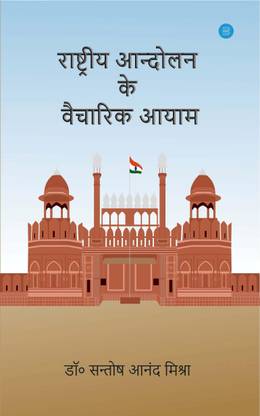Maharani Ahilyabai Holkar: A Radiant Symbol of Justice, Dharma, and Good Governance
(31 May 1725 – 13 August 1795)
Maharani Ahilyabai Holkar stands among the greatest women in Indian history—an embodiment of feminine strength, religious devotion, justice, and benevolent governance. This extraordinary queen of the 18th century transformed the Malwa kingdom into a prosperous and well-organized state through her wisdom, courage, spirituality, and administrative acumen. She perfectly balanced her responsibilities as a householder, a ruler, and a public servant—earning her a place as one of India's most revered leaders.
Early Life
Ahilyabai Holkar was born on 31 May 1725 in Chondi village (in present-day Ahmednagar, Maharashtra) to Mankoji Shinde, a simple farmer. From a young age, she displayed exceptional piety, intelligence, and compassion. Her potential was first recognized by Malhar Rao Holkar, a senior Maratha noble, who arranged her marriage to his son Khanderao Holkar.
Marriage, Family Life, and Rise to Power
Ahilyabai married Khanderao Holkar, heir to the Holkar dynasty. Her father-in-law, Malhar Rao Holkar, was a prominent general under the Maratha empire.
- 1754: Khanderao died during the Battle of Kumbher.
- 1766: Malhar Rao passed away.
- 1767: Her only son Male Rao also died.
Ahilyabai then took the reins of governance herself—a rare and unprecedented step for a woman in that era. Yet, she ruled not just effectively, but with such brilliance that her reign became a golden era of justice and dharma.
Good Governance and Administrative Excellence
Ahilyabai Holkar’s reign (1767–1795) is remembered as a golden period of righteous rule, social welfare, and efficient administration.
Highlights of her governance:
-
Justice and Fairness:
She personally presided over court sessions and ensured swift, impartial justice. -
Compassionate Tax Policy:
Revenue collection from farmers was fair and humane. Excessive taxation was avoided. -
Military Reforms:
She reorganized the army and strengthened border security. -
Public Welfare:
Free food, clothing, shelter, and medical aid were provided for the poor and needy.
Religious and Cultural Preservation
Ahilyabai was not only a just ruler but also a great patron of Indian spirituality, architecture, and culture. She rebuilt many ancient temples and pilgrimage centers destroyed or neglected over time and established inns and shelters for travelers across India.
Major Temple Constructions and Renovations Across India
| # | Location | Contribution | State |
|---|---|---|---|
| 1 | Kashi | Reconstruction of Kashi Vishwanath | Uttar Pradesh |
| 2 | Somnath | Restoration of Somnath Temple | Gujarat |
| 3 | Gaya | Construction of Vishnupad Temple | Bihar |
| 4 | Dwarka | Renovation of Dwarkadhish Temple | Gujarat |
| 5 | Rameshwaram | Support to Ramanathaswamy Temple | Tamil Nadu |
| 6 | Haridwar | Construction of Har Ki Pauri Ghat | Uttarakhand |
| 7 | Trimbakeshwar | Temples and ghats | Maharashtra |
| 8 | Ujjain | Restoration of Mahakaleshwar Temple | Madhya Pradesh |
| 9 | Ayodhya | Temples and dharamshalas | Uttar Pradesh |
| 10 | Nashik | Construction of Godavari Ghats | Maharashtra |
Ghats, Wells, Stepwells, and Waterworks
| # | Location | Contribution | Feature |
|---|---|---|---|
| 1 | Maheshwar | Ghats on Narmada River | Grand stone structures |
| 2 | Kashi | Ahilya Ghat construction | Still renowned today |
| 3 | Trimbakeshwar | Wells and ghats | For pilgrims and daily use |
| 4 | Indore, Ujjain | Stepwells (Bawadis) | For water supply and rest |
Dharamshalas (Inns)
| Location | Purpose |
|---|---|
| Ayodhya, Gaya, Haridwar, Dwarka, Rameshwaram | Inns for pilgrims |
| Varanasi | Rest houses for Brahmins and ascetics |
| Maheshwar | Guesthouses for visitors and travelers |
Cultural Capital at Maheshwar
Ahilyabai made Maheshwar the cultural heart of her kingdom. She established schools of Sanskrit, temples, yagya mandaps, and promoted music, philosophy, astrology, and Vedic education.
Her Personal Life and Character
- Lived a life of simplicity and austerity.
- Woke up daily at 4 AM and began her day with prayers.
- Never indulged in luxury or vanity.
- Deeply compassionate toward the underprivileged.
Remarkable Achievements
- Built 70+ temples, 100+ ghats, and numerous dharamshalas.
- All constructions funded from her personal wealth, not state treasury.
- Never inscribed her name on any monument—only dedicated to the deity.
Death and Legacy
Maharani Ahilyabai passed away on 13 August 1795. After her death, her daughter-in-law Tulsabai Holkar briefly continued the administration.
Legacy
- Honored by the Indian government through commemorative stamps.
- Roads, institutions, and women’s programs across India bear her name.
- Her life remains a beacon of justice, spirituality, and public service.
Conclusion
Maharani Ahilyabai Holkar was not just a queen—she was the very soul of Indian culture and spirituality in action. She proved that a woman, with righteousness, compassion, and wisdom, can transform an entire kingdom. Her legacy endures as a guiding light for administrators, spiritual seekers, and the public alike.
🙏 Salutations to the everlasting memory of Maharani Ahilyabai Holkar.












0 Comments
Thank you